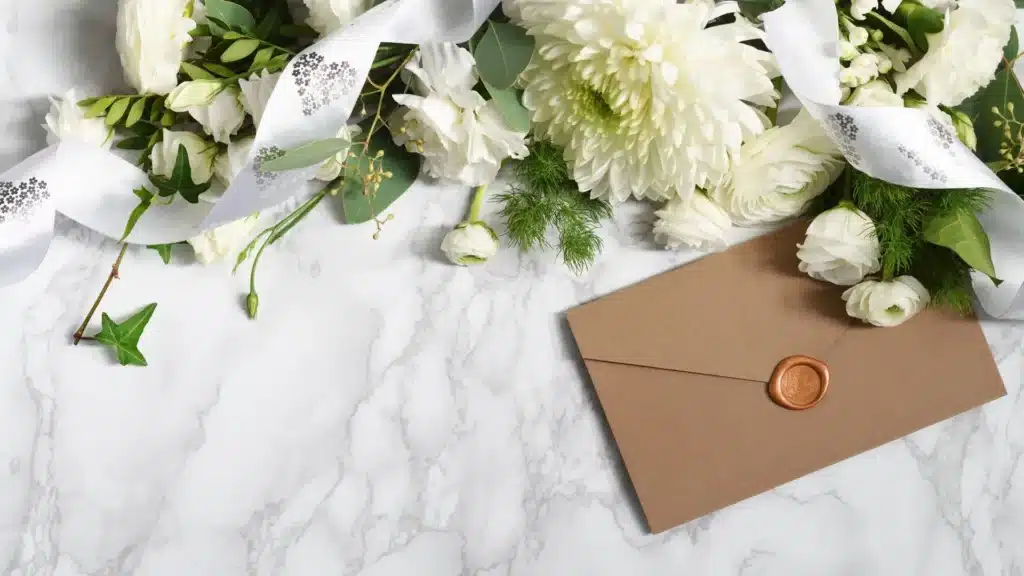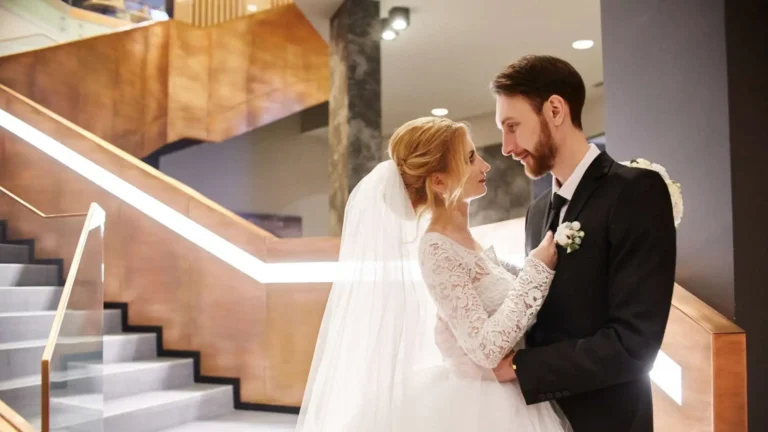Table of Contents
Planning a wedding is one of life’s most exciting yet stressful milestones. From choosing the perfect venue to selecting attire, flowers, and catering, costs can quickly add up. Many couples feel overwhelmed by budgeting complexities and struggle to decide where to spend wisely and where to save. The key is finding a balance between your dream celebration and financial reality.
A strategic approach to wedding budgeting focuses on understanding which elements create lasting memories and which areas have minimal impact on the overall experience. By making informed trade-offs, couples can maximize value, satisfaction, and financial responsibility.
In this guide, we’ll show you how to allocate your wedding budget strategically, highlight categories worth splurging on, reveal areas where you can save, and provide actionable tips to maintain control without compromising your vision. With tools like Beem’s smart wallet, instant cash access, Beem Card, and AI financial assistant, couples can track expenses, manage payments, and make smarter financial decisions—helping keep the wedding planning journey stress-free and manageable.
Understanding Wedding Budget Basics
Before deciding where to splurge or save, it’s critical to understand the fundamental components of a wedding budget. Most wedding costs fall into common categories, each with a varying degree of importance to the overall experience.
Typical expenses include venue rental, catering, attire, decor, photography and videography, entertainment, transportation, and miscellaneous items like invitations and favors. On average, couples spend roughly 30–40% on the venue and catering combined, 10–15% on attire, and 10–15% on photography, with the remaining budget spread across other elements.
By understanding this breakdown, couples can identify which areas are essential to their vision and which can be scaled back. Allocating budget intentionally ensures that spending aligns with priorities and maximizes the overall impact of each dollar.
Identifying Priorities
Every wedding is unique, so it’s essential to establish personal priorities early in the planning process. Couples should discuss what matters most to them—whether it’s a dream venue, high-quality photography, or a standout entertainment experience.
Creating a hierarchy of priorities helps guide spending decisions. Must-have elements are where splurging makes sense, while nice-to-have or optional items can be adjusted or minimized to save funds. This approach ensures that critical elements shine, even if the budget requires compromise elsewhere.
Example: A couple may prioritize capturing high-quality photos and video over extravagant floral arrangements. By investing in experienced professionals, they preserve memories without overspending on temporary decorations.
Setting a Realistic Budget
Establishing a realistic overall budget is the first step toward making strategic trade-offs. Couples should consider their combined income, savings, and any contributions from family members when determining the total amount to allocate for the wedding.
Once the budget is set, funds can be distributed across key categories in line with priorities. It’s important to include a contingency fund for unexpected costs, which often arise during the planning process. Allocating roughly 5–10% of the total budget for unforeseen expenses helps prevent financial stress and ensures smooth execution.
Budgeting tools like Beem Budget Planner can be invaluable for tracking deposits, payments, and category allocation, giving couples a clear picture of where their money is going and helping maintain financial discipline.
Here are some Wedding Budgeting and Saving Tips you may be interested in. Take a look at it.
Categories Worth Splurging On
Not all wedding expenses are equal. Certain elements have a lasting impact on the overall experience and memories, making them worth higher investment.

Venue and Ambiance
The venue sets the tone for the entire celebration. A beautiful location enhances photos, creates an unforgettable atmosphere, and often defines the overall wedding style.
While venues can be expensive, splurging on a space that aligns with your vision often yields a higher return on investment in terms of guest experience and long-term satisfaction. Couples can balance costs by booking off-peak dates or considering smaller but stunning locations to maximize impact while controlling expenses.
Additional ways to enhance ambiance without overspending include lighting, minor decor, and layout optimization. The key is prioritizing a venue that contributes significantly to the wedding’s overall feel.
Photography and Videography
Wedding photography and videography are often cited as the most important investment for couples, as these memories last a lifetime. High-quality professionals capture moments, emotions, and details that cannot be recreated.
Choosing reputable photographers and videographers may come with a higher price tag, but it ensures professional editing, consistent quality, and peace of mind on the big day. Couples can save on extras like elaborate albums or prints initially, focusing instead on obtaining a digital archive of high-quality images.
Investing in these services pays off long-term, as the captured memories become priceless keepsakes for years to come.
Food and Catering
Food plays a central role in guest experience. Quality catering contributes to guest satisfaction, atmosphere, and social interaction, making it an area worth allocating sufficient budget.
Options to manage costs include menu selection that balances premium dishes with more affordable options, limiting alcohol consumption, or offering a signature cocktail instead of an open bar. Buffet-style setups or family-style meals can also deliver quality without excessive expense.
Couples should prioritize taste, presentation, and service quality over extravagant decorations or overly complex menus, ensuring that guests feel valued and the dining experience is memorable.
Entertainment
Music and entertainment shape the energy of a wedding and influence guest engagement and atmosphere. A talented DJ or live band can elevate the experience, creating moments that guests remember fondly.
Investing in entertainment is often worth it, particularly if dancing and music are priorities for the couple and their attendees. Couples can balance cost by hiring local performers, scheduling performances selectively, or combining live and pre-recorded music strategically.
Entertainment creates long-lasting memories, and thoughtful investment here can compensate for savings in less critical areas, ensuring an overall enjoyable celebration.
Read on How to Budget and Save for Your Wedding.
Areas Where Cutting Costs Is Acceptable
While some categories are worth splurging, others can be scaled back without diminishing the overall experience. Strategic savings in these areas help free up funds for high-impact items.
Invitations and Stationery
Paper invitations, elaborate programs, and custom calligraphy can be costly. Affordable alternatives include digital invitations, minimalist designs, or DIY approaches that are both elegant and budget-friendly.
Online templates, free design tools, and printable options allow couples to maintain style while controlling costs. Prioritizing clarity and personalization over extravagance ensures guests feel welcome without unnecessary expense.
Digital RSVP tracking also reduces paper waste, aligns with sustainability goals, and simplifies logistics.
Also Read: How to Save Money on Wedding Invitations?
Favors and Giveaways
Wedding favors are often appreciated but are non-essential, making them an ideal area for savings. Couples can focus on meaningful or practical tokens rather than expensive trinkets.
Options include handmade treats, donation-based favors, or small keepsakes that reflect the couple’s personality. Thoughtful presentation can make inexpensive items feel luxurious without high costs.
Focusing on experience over extravagance allows couples to allocate more funds to high-impact areas such as venue, catering, or photography.
Decorations and Flowers
While flowers and decorations enhance aesthetics, overspending here often has temporary benefits. Couples can reduce costs by renting decor, using seasonal flowers, or creatively repurposing items.
DIY elements, borrowed items, or minimalistic designs can create a beautiful setting while freeing budget for splurges elsewhere. Emphasizing key focal points, like the ceremony backdrop or reception tables, delivers visual impact without excessive spending.
This approach ensures style and atmosphere without compromising the budget or overall experience.
Attire and Accessories
Wedding attire is important, but secondary outfits, accessories, or non-essential items can be purchased strategically. Renting, shopping sales, or choosing versatile pieces allows couples to look polished without overspending.
Splurging on primary attire is often more memorable, while secondary outfits, bridesmaids’ dresses, or accessories can be scaled to match budget priorities. Consider resale or rental options for items that will be worn only once.
This balance ensures investment where it matters most while reducing overall financial burden.
Here’s more on How Much to Spend on a Wedding Gift? Practical Tips.
Trade-Off Strategies for a Balanced Wedding Budget
Visualizing the Budget
Creating a visual representation of your budget helps couples see allocations clearly. Pie charts, spreadsheets, or budgeting apps allow you to adjust spending across categories.
By visualizing priorities, couples can identify areas for trade-offs and ensure critical elements receive adequate funds. This also allows easy recalibration if unexpected costs arise.
Visual tools also facilitate communication between partners and family members, ensuring everyone agrees on spending priorities and trade-offs.
Negotiating and Bundling Services
Many vendors offer package deals or seasonal discounts, which can reduce overall costs. Couples should ask about bundled services, such as catering plus rentals, or discounted off-season rates.
Negotiation can also yield cost savings without sacrificing quality. Discussing flexible options, smaller package tiers, or scaled-back services often leads to mutually beneficial arrangements.
Bundling services strategically can free funds for splurges in high-impact areas, ensuring a balanced and well-managed budget.
Phased Spending Approach
Breaking wedding expenses into phases allows couples to spread costs over time, reducing financial pressure. Prioritize high-impact items first, then allocate funds to optional categories gradually.
Phased spending ensures preparedness for unexpected costs while giving time to research deals and make informed purchasing decisions.
Common Budgeting Pitfalls and How to Avoid Them
Common pitfalls include underestimating guest count, ignoring hidden costs, and emotional overspending due to pressure from family or peers.
By anticipating these pitfalls, couples can proactively manage their budget. Keeping track of actual expenses, reviewing contracts carefully, and aligning spending with priorities reduces stress and prevents financial strain.
Budgeting tools and checklists ensure every dollar is intentional, avoiding surprises while maintaining a celebratory atmosphere.
Discover smart savings for your big day with DealsGPT—get personalized deals and discounts to make your wedding budget go further.
FAQs on Wedding Budget Trade-Offs
1. How much should I allocate to each wedding category?
Budget allocation depends on priorities, but commonly 30–40% for venue and catering, 10–15% for attire, 10–15% for photography, and the remainder for entertainment, decor, and miscellaneous costs. Adjust based on personal values and preferences.
2. Is it better to splurge on photography or catering?
Both are high-impact, but photography preserves memories long-term, while catering affects immediate guest experience. Couples should balance based on personal priorities and the importance of lasting keepsakes versus live enjoyment.
3. How can we save money without compromising guest experience?
Focus on areas with temporary impact like decor, favors, and stationery. Use DIY solutions, off-season bookings, and digital alternatives. Allocate savings toward high-impact items that enhance the overall experience.
4. Should we prioritize venue or entertainment?
Venue impacts the overall ambiance, guest comfort, and photos. Entertainment sets energy and mood. Prioritize based on your vision and which elements matter most to you and your guests.
5. How do we manage unexpected wedding expenses?
Maintain a contingency fund, typically 5–10% of total budget. Track spending carefully with apps or tools like Beem Budget Planner to ensure funds are available for last-minute adjustments.
Conclusion
Wedding planning is a delicate balance between dreams and reality. By understanding where to splurge and where to save, couples can create a memorable celebration without overspending. Focusing on high-impact areas like venue, photography, food, and entertainment ensures lasting memories, while cost-effective solutions in other areas help maintain overall budget control.
With Beem, couples can manage their finances with ease. Features like instant cash access, a secure smart wallet, the Beem Card for spending and credit building, and a personal AI assistant make it simple to track expenses, manage payments, and stay on top of cash flow throughout the planning process.
By making intentional financial choices and leveraging smart tools, couples can prioritize what matters most, avoid common pitfalls, and enjoy a wedding that’s both beautiful and financially sustainable.
Plan your dream wedding without the stress—download the Beem app today to manage your expenses, track payments, and make smarter financial decisions every step of the way.















































